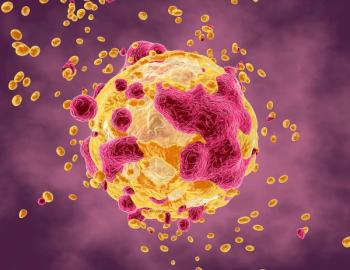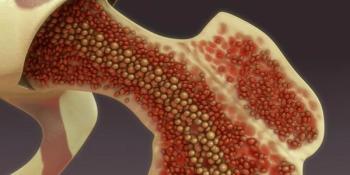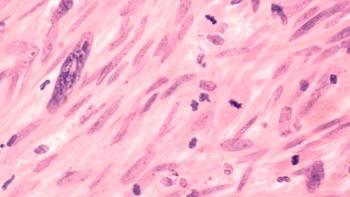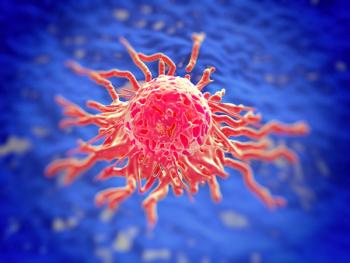
Oncology NEWS International
- Oncology NEWS International Vol 18 No 7
- Volume 18
- Issue 7
PET/CT Indicates if Early Neoadjuvant Rx is Making the Grade in Sarcoma Patients
Using FDG-PET/CT, a multidisciplinary team has been able to determine within a short period of time whether neoadjuvant therapy for soft-tissue sarcoma is working.
ABSTRACT: Study led by surgical oncologist achieves two milestones: Assessing early response and using molecular imaging to do so.
Using FDG-PET/CT, a multidisciplinary team has been able to determine within a short period of time whether neoadjuvant therapy for soft-tissue sarcoma is working.
Fritz C. Eilber, MD, from the Ahmanson biological imaging division and the department of surgery at the David Geffen School of Medicine, University of California, Los Angeles, included 50 resectable high-grade soft-tissue sarcoma patients in their prospective study (Clin Cancer Res 15:2856-2863, 2009).
The patients were administered FDG-PET/CT at baseline, after the first cycle of treatment with ifosfamide or gemcitabine (Gemzar), and after completion of neoadjuvant therapy. Patients with ≥ 95% pathologic necrosis were classified as treatment responders. Tumor size averaged 10.2 cm ± 4.8 cm and remained essentially unchanged at early and late follow up (10.4 ± 5.5 vs 9.7 ± 5.3 cm). At early follow up, FDG uptake decreased more in responders than in nonresponders. All responders-and 14 of the 42 nonresponders-experienced a reduction in standardized uptake value of FDG ≥ 35% between baseline and early follow up (see Figure). Examining the histopathologic response, eight patients were classified as responders based on necrosis ≥ 95%.
The researchers used a cutoff of ≥ 35% in standardized uptake value, because after early follow up, if the patient did not show FDG uptake > 35%, treatment was unlikely to work. The 35% cutoff point resulted in a sensitivity of 100% and a specificity of 67%. The researchers also found CT held no value in response prediction.
“We knew PET was accurate at assessing response after the completion of neoadjuvant therapy, but the question was could we tell after the first cycle? It would be nice to know really early,” said Dr. Eilber, who is an assistant professor of surgical oncology and director of the Sarcoma Program at UCLA’s Jonsson Cancer Center.
In this study, if a patient did not decrease activity by 35% on the PET, the patient never pathologically responded. Not only is this study the first time treatment has been monitored in sarcoma patients this early in therapy, it’s unique because it used a combined PET/CT scan, according to Dr. Eilber.
“Size after the first cycle had no prognostic value. PET did. This is also one of the earlier endpoints looked at,” he said. Extended follow-up results will determine whether PET/CT will become a routine study in sarcoma patients.
Articles in this issue
over 16 years ago
Less is more when it comes to serial CA125 testing in ovarian cancerover 16 years ago
Treatment varies widely in chronic myeloid leukemiaover 16 years ago
Oncology takes blame for rising healthcare costover 16 years ago
NSABP chair admits ‘failure’ in C-08 trial, denies defeatover 16 years ago
Gemcitabine, capecitabine regimens equal in breast ca metsNewsletter
Stay up to date on recent advances in the multidisciplinary approach to cancer.





















































































